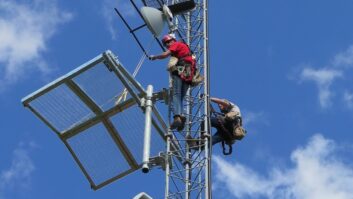The FCC has clarified what kind of content is allowed on Travelers’ Information Stations, and also seeks public input on further planned changes.
TIS operators transmit noncommercial, travel-related information over AM frequencies to motorists in a local area. The commission created the service in 1977 and authorized stations to operate on 530 kHz on a primary basis and on a secondary basis in the 535–1705 kHz band.
At inception, the agency envisioned local governments would use TIS to reduce traffic congestion. Commercial broadcasters opposed the creation of TIS, saying the information conveyed would be duplicative and siphon off their ad revenues or cause interference.
Over the years, TIS operators and sponsors have wanted to broaden the scope of their content and eliminate the restriction that confines their transmitting sites to areas near roads, bridges, highways and public transportation terminals like bus stops, train stations and airports. The American Association of Information Radio Operators wanted to broadcast excerpts of NOAA Weather Radio transmissions and AMBER Alerts, for example.
AMBER and Silver Alerts are allowed on TIS stations, the FCC has clarified, however the weather alerts are trickier.
TIS operators can already “transmit weather alerts regarding difficult or hazardous conditions, as well as information regarding motor vehicle crashes, emergency points of assembly, road closures and construction, parking, current driving travel times, air flight status, truck weigh stations, driver rest areas, locations of truck services, and road closures,” says the FCC.
The agency has now illuminated what is permissible TIS content on the 10-watt stations in response to requests from AAIRO, Highway Information Systems and the American Association of State Highway and Transportation Officials. TIS content will remain noncommercial and must relate to travel, an emergency or an imminent threat of danger.
The commission nixed the idea of routinely retransmitting entire NOAA Weather Radio Alerts, saying weather information is available on commercial radio stations, as well as cellphones, mobile Internet, automobile-based information systems and satellite radio. However, the commission is now allowing TIS to integrate those alerts into TIS broadcasts during especially hazardous conditions. The commission explains that all Part 90 facilities, including TIS, can transmit emergency information during a natural disaster, for example.
Although the commission didn’t preclude TIS operations from using multiple transmitters, the agency didn’t allow multiple TIS transmitters to operate as a network, but instead required each TIS site to provide specifically targeted information restricted to the immediate vicinity of the area served by that site. Now, the FCC has partially removed that restriction, requiring only that simulcast TIS transmissions be relevant to travelers in the vicinity of each transmitter in the network. Allowing such a station to be simulcast will cut operating costs, says the FCC, because licensees would no longer need to create individual transmissions for each transmitter in a network.
TIS field strength limits — not to exceed “2 mV/m when measured with a standard strength meter at a distance of 1.50 kilometers (0.93 miles) from the transmitting antenna system” — are being left in place to protect AMs from interference; so too, are site restrictions.
The changes become effective Sept. 18.
In a Further Notice, the agency is proposing deleting requiring the filtering of TIS audio frequencies above 3 kHz; commenters have told the agency that filtering makes it harder to hear the TIS broadcasts while adding little to interference protection of commercial AM stations. The FCC is asking for public input on whether there’s any reason to keep the filter requirement.
Federal Register publication has triggered due dates for public comments; those are due by Sept. 18 and replies by Oct. 3 to PS Docket 09-19.












